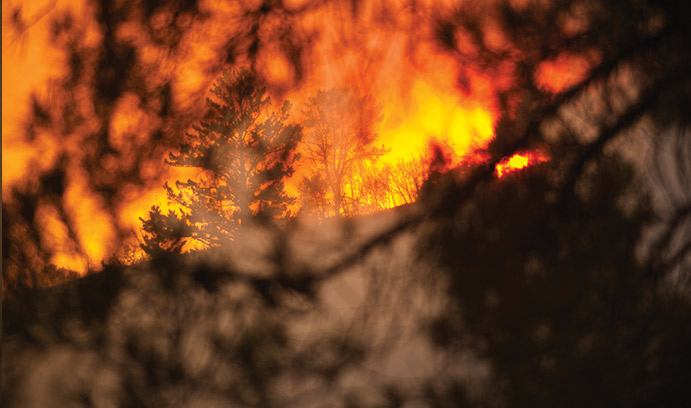Drought, Fire and Forest Composition
Recent and projected increases in global temperatures, associated changes in regional moisture and changes in the frequency of extreme climatic events have raised concerns about potential rapid ecosystem changes. As an ecologist with a focus in paleoecology, Robert K. Booth examines how ecosystem and vegetation changes have responded to past climate change, and his work may be better able to anticipate future ecological changes.
Funded by the National Science Foundation, his most current research examined an abrupt forest transition that occurred in the American Northeast about 500 years ago. Booth and his Ph.D. student, Michael Clifford, studied the potential causes of this vegetation change and its timing relative to similar changes documented in the Great Lakes region. To do this, they studied the regional patterns of the vegetation changes using available pollen records and collected cores from two bogs, using these data to link the widespread vegetation changes to prolonged drought and wildfire.
"It looks to have been quite abrupt, likely occurring within a decade or two," says Booth, associate professor of earth and environmental sciences. "Tree species like hemlock and beech, which are more wet adapted, decreased in abundance and were replaced by pine and oak. The forest composition was permanently altered across much of the Northeast by the drought and associated wildfires."
Direct evidence for drought and fires came from the sediment cores, which were analyzed for charcoal and testate amoebae, a group of shell-producing protists. Booth has pioneered the use of testate amoebae in paleoecological studies, particularly their use as indicators of past hydrological variability. By defining past patterns of drought in North America, and linking these records with changes in vegetation and fire frequency, Booth and his students are developing and testing hypotheses of how ecosystems respond to climate change.
Booth's research adds to a growing body of evidence indicating that forested ecosystems in humid regions are sensitive to moisture variability and may undergo rapid, widespread and long-lasting compositional change in response to sudden drought and fire. Long-term outlooks improve scientists' understanding of the variables that control forest resilience and will contribute to the development of necessary and realistic models of forest change under variable and changing climatic conditions.
Posted on:


